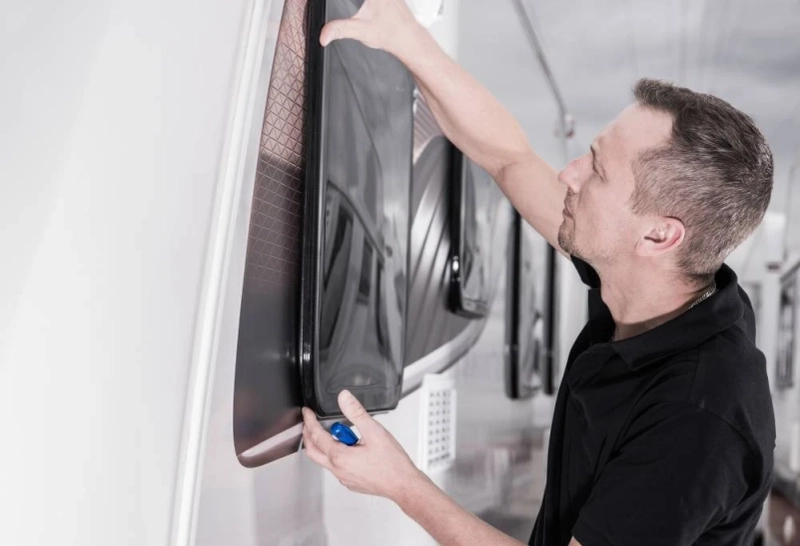Food trucks have taken the culinary world by storm, giving chefs, entrepreneurs, and dreamers the opportunity to take their flavors directly to customers—anywhere. But behind every successful custom food truck is a carefully thought-out design that maximizes efficiency, meets safety standards, and reflects the brand’s personality.
If you’re considering building or upgrading a food truck, understanding layouts, equipment selection, and space planning is essential for both performance and profitability.
1. Understanding Food Truck Layouts
The layout of a custom food truck determines how smoothly you can prepare, cook, and serve food while meeting health and safety regulations.
Common Layout Styles
- Assembly Line Layout
- Best for high-volume service and fast-moving menus. Staff works in a straight line from prep to cooking to service window.
- Island Layout
- Equipment is placed in the center, with staff working around it. This allows multiple stations to operate simultaneously.
- Zone Layout
- Divides the truck into sections—prep area, cooking area, plating area—ideal for complex menus.
- Service-Forward Layout
- The service counter takes up more space to engage with customers and show the cooking process.
2. Essential Equipment Choices
Your equipment selection depends on your menu, service style, and available space. It’s important to balance performance with size and energy efficiency.
Cooking Equipment
- Griddles & Flat Tops – Perfect for burgers, breakfast items, and grilled sandwiches.
- Fryers – Ideal for fried favorites like fries, chicken, and doughnuts.
- Charbroilers – Great for grilled meats and smoky flavors.
- Ovens – For baking, roasting, or pizza menus.
Refrigeration & Storage
- Under-counter fridges – Save space and keep ingredients within reach.
- Reach-in coolers/freezers – For bulk storage on long service days.
- Dry storage cabinets – For non-perishable items and small equipment.
Other Must-Haves
- Ventilation hood & fire suppression system – Essential for safety and compliance.
- Handwashing sinks – Required for health code approval.
- POS system – Streamlines orders and payments.
3. Smart Space Planning Tips
In a food truck, every square inch counts. Poor planning can cause delays, safety hazards, and staff frustration.
Workflow Efficiency
- Position cooking equipment in sequence from prep to cook to serve.
- Keep cold storage close to the prep area to reduce walking time.
Safety & Compliance
- Maintain clear walkways to prevent accidents.
- Install non-slip flooring and secure heavy equipment.
- Ensure ventilation meets local codes to remove heat and smoke.
Maximizing Storage
- Use wall-mounted shelving for lightweight items.
- Choose multi-functional equipment, like a combination oven.
- Store frequently used tools within arm’s reach of their station.
Customer Interaction
- If your concept thrives on engagement, position the service window so customers can see the cooking process.
- Keep your branding visible both inside and outside the truck.
4. Branding and Aesthetic Considerations
A well-designed custom food truck layout doesn’t just work efficiently—it also tells your brand’s story.
- Choose colors and materials that match your brand identity.
- Position signage so it’s visible from a distance.
- Integrate menu boards and lighting to attract attention, especially at night.
Conclusion
Building a successful custom food truck is about more than great recipes—it’s about creating a space where your team can work efficiently, safely, and with pride. By choosing the right layout, selecting the best equipment for your menu, and using smart space planning strategies, you’ll set your mobile kitchen up for long-term success.
Whether you’re launching your first truck or upgrading an existing one, remember: good design is as important as good food.
FAQs About Custom Food Truck Layouts and Planning
Q1: How much space is ideal inside a food truck?
Most food trucks range between 14–20 feet in length, but the right size depends on your menu and staffing needs.
Q2: Can I use residential appliances in a food truck?
No, you should always use commercial-grade equipment approved for mobile food service to meet health and safety standards.
Q3: How do I make sure my layout meets health codes?
Consult your local health department early in the design process to ensure compliance.
Q4: What’s the most common mistake in food truck space planning?
Not considering workflow efficiency, which can cause bottlenecks and slow service.



